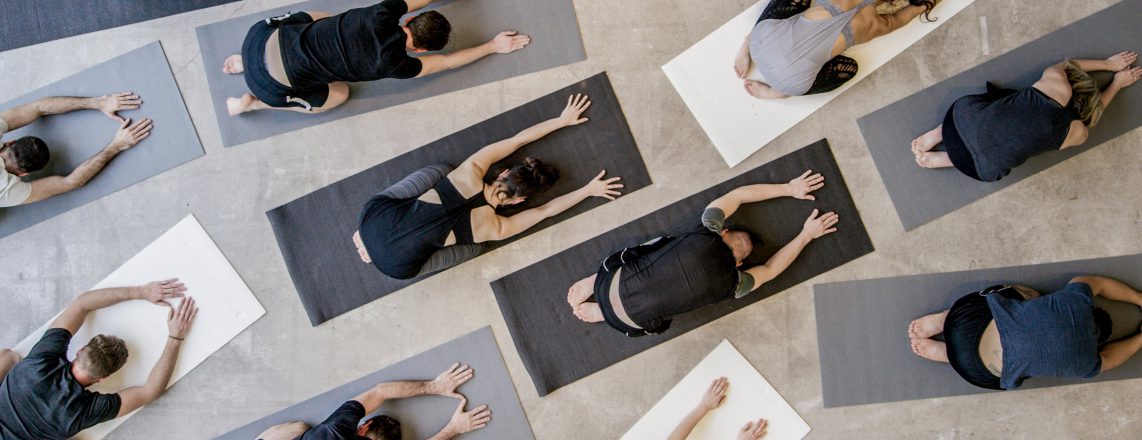If you are one of the 54 million Americans who have osteoporosis, you may be wondering whether yoga is safe. Since osteoporosis weakens bones, you know that falling is one of the key things you don’t want to do. Can all that bending, reaching, and balancing in yoga put you at risk for falling?
It’s a reasonable fear. But, for most people, the benefits of yoga outweigh the risks.
Never Miss a Beat!
Subscribe to Our HealthBeat Newsletter!
Thank you for subscribing!
You can now select the specific newsletters you'd like to receive.
You are already subscribed.
Subscribe to more newsletters in our email preference center.
Sorry, an error occurred. Please try again later.
Get Healthy Tips Sent to Your Phone!
Can Doing Yoga Increase My Risk for Fractures?
Current research shows that people who have osteoporosis or osteopenia are at a slightly increased risk for spinal fractures when twisting or bending forward. However, studies also show activities like yoga help to increase core strength, prevent falls, and improve bone density. This study states that older adults with osteoporosis should add resistance and balance training exercises into a regular fitness routine.
Core strength improves balance and posture, as well as overall pelvic and spinal strength. These are keys in reducing falls and breaks for those with osteoporosis. Yoga postures that emphasize spinal alignment should be encouraged. These components help make everyday tasks easier with less risk of falls.
How to Get Started With Yoga if You Have Osteoporosis
If you’re interested in yoga, a great first step is to ask your doctor whether they recommend yoga for you. And ask if they can recommend classes specifically for people with osteoporosis or instructors who have training on safe postures and transitions for people with osteoporosis.
If you’re looking on your own, a few tips to consider:
- Start with a beginner class. Classes are often rated beginner, intermediate, or advanced. You can also look for words like gentle or restorative in the class title.
- Try different types of yoga. Hatha yoga is a basic type of yoga and a good place to start.
- Make sure the teacher is a certified yoga instructor with expertise in this area. Different studios and fitness centers have different certification programs.
- Tell the instructor about any issues or concerns you have.
- Never be afraid to ask for modifications of poses or use yoga blocks. (Yoga blocks are small foam or cork blocks that can help you get into different poses.)
- Listen to your body. A pose may be challenging, but stop if you feel pain..
- Beware of forward bends. A Yoga International article recommends that people with osteoporosis skip these altogether. This is especially true if you’ve had fractures in your upper back.
What Are the Benefits of Yoga for People With Osteoporosis?
It can help strengthen your bones
Moving your spine gently, such as with easy side bends and twists, can help strengthen your back and neck. Moves that have you bring your hands to the mat are especially good for strengthening your arms. That includes tabletop, plank, and forearm plank.
You also can build bone density by doing yoga. Recent studies of yoga and osteoporosis suggest increased bone absorption based on DEXA scans. In one study, bone density improved in osteoporotic, postmenopausal women after a 6-month yoga program of weight-bearing and nonweight-bearing poses, breathing exercises, and meditation.
In general, weight-bearing movement encourages your body to build new, healthy bone. Yoga International offers this sequence.
You can improve your balance
Yoga is a great way to train and improve your balance. Better balance can reduce your risk of falling. The National Center for Complementary and Integrative Health reports solid data on yoga and balance.
Of 15 studies on the effect of yoga on balance in healthy people, 11 showed balance improvements.
It helps you feel more energetic
Doing yoga can increase your energy level in two ways. First, it helps relieve stress, which can sap your energy.
Secondly, yoga is about connecting breath with movement, which means you breathe more deeply. All that mindful breathing forces oxygen out to your cells, which helps awaken you. One study connected yoga poses to increased feelings of energy and self-esteem.
Osteoporosis can reduce your confidence in your own body and fill you with worry. Yoga can be a balm for that anxiety, and help you feel more like yourself.
To learn more about UPMC Orthopaedic Care or schedule an appointment, please call 1-866-987-6784 or visit our website.
Sources
About UPMC Orthopaedic Care
When you are dealing with bone, muscle, or joint pain, it can affect your daily life. UPMC Orthopaedic Care can help. As a national leader in advanced orthopaedic care, we diagnose and treat a full range of musculoskeletal disorders, from the acute and chronic to the common and complex. We provide access to UPMC’s vast network of support services for both surgical and nonsurgical treatments and a full continuum of care. Our multidisciplinary team of experts will work with you to develop the treatment plan that works best for you. Our care team uses the most innovative tools and techniques to provide better outcomes. We also are leaders in research and clinical trials, striving to find better ways to provide our patients care. With locations throughout our communities, you can find a provider near you.
